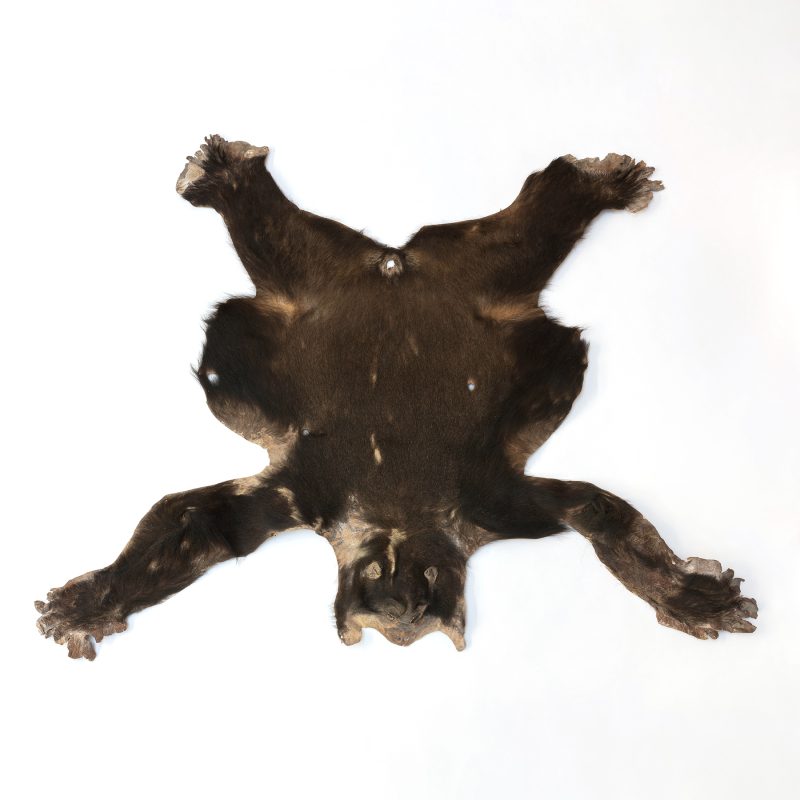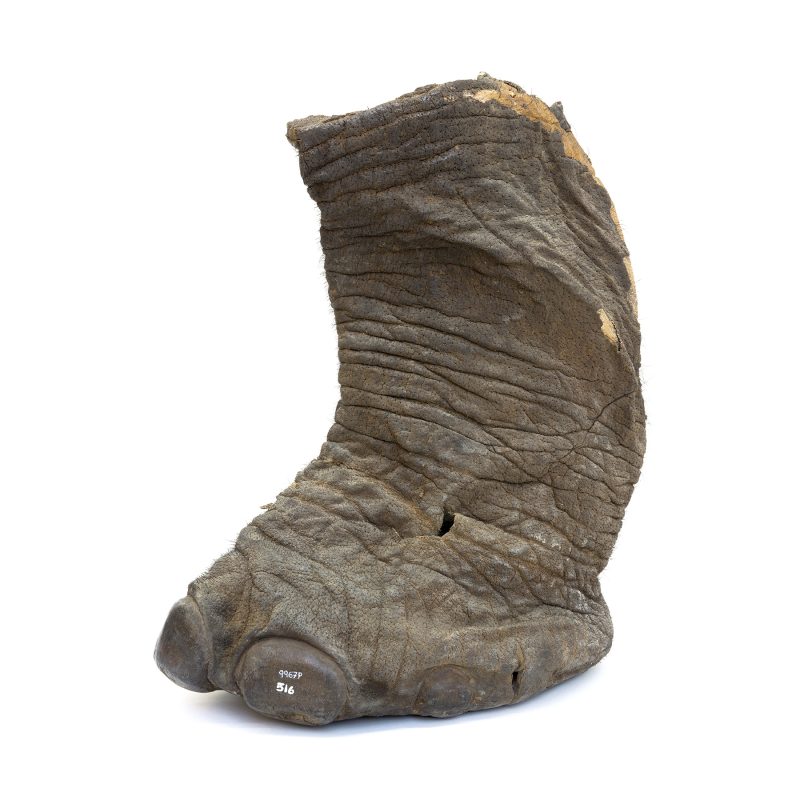Pieces
Of the one hundred and ten pieces in the African collections of the Igualada Leather Museum, twenty-one come from Morocco (mainly tanned skins and textiles), and were probably acquired in souks in the area of the Protectorate and incorporated into the museum through both public and private donations, according to the inventory. The little relevance in terms of restitution of this collection and the difficulties in carrying out a traceability study of the objects (with no data on the donors in either the Regional Archive of Anoia or the General Archive of the Administration in Alcalá de Henares), have meant that the bulk of the research has focused on the pieces from Equatorial Guinea.
The Equatorial Guinean collection is small, consisting of only twelve pieces of stuffed skins of various animals, mainly from supposed donations from the primatologist Jordi Sabater Pi—a collaborator of the Igualada Museum since 1955 and a member of its Board of Trustees from 1960 onwards. The link between these pieces and the parallel research on the Sabater Pi collection at the University of Barcelona and on Sabater himself makes it possible to carry out a more careful and problematized study of traceability.
Origin
The pieces donated to the museum by Sabater Pi have no date of entry in the inventory, but according to the primatologist’s correspondence with Antonio Jonch (director of the Barcelona Zoo between 1955 and 1985), and with the correspondence with the Igualada Leather Museum itself, we can place them between 1955 and 1965 (dating the bulk in 1957). These pieces mainly include the skins of several primates and an elephant’s leg, which allow us to problematize the plundering of nature and ecological transformations of the colonial enterprise.


